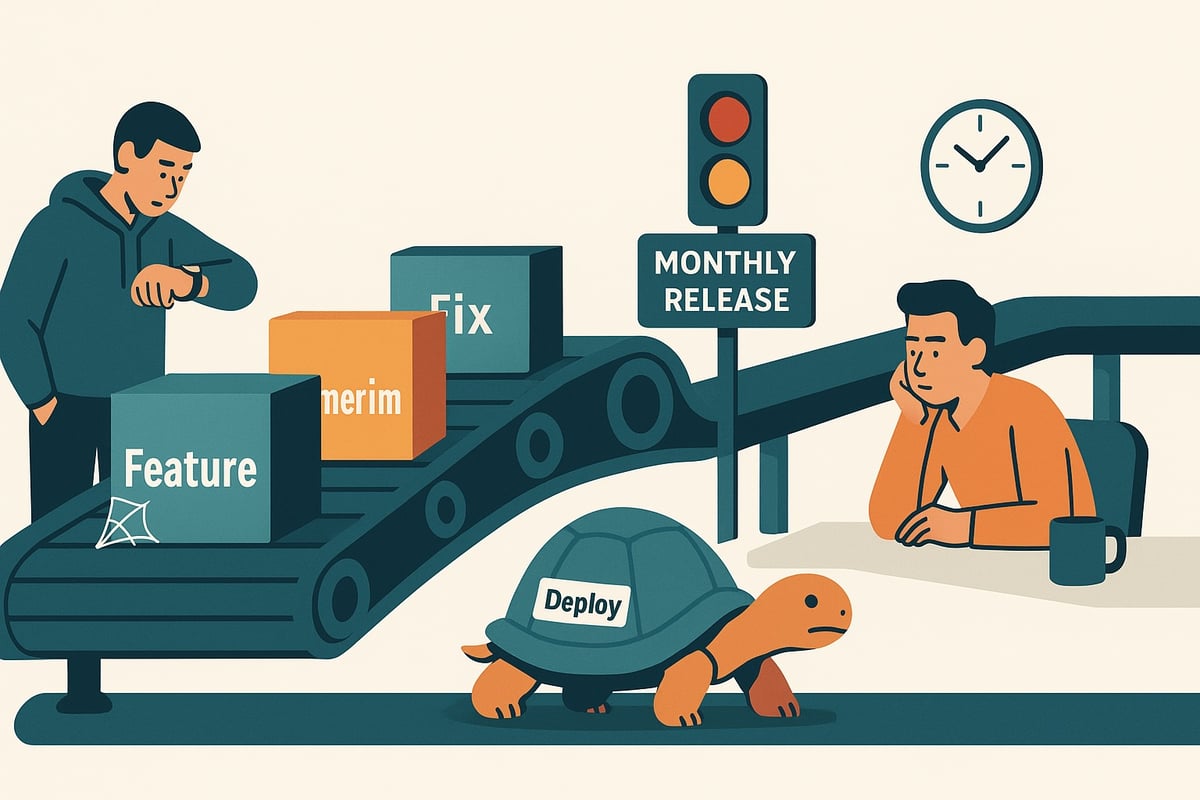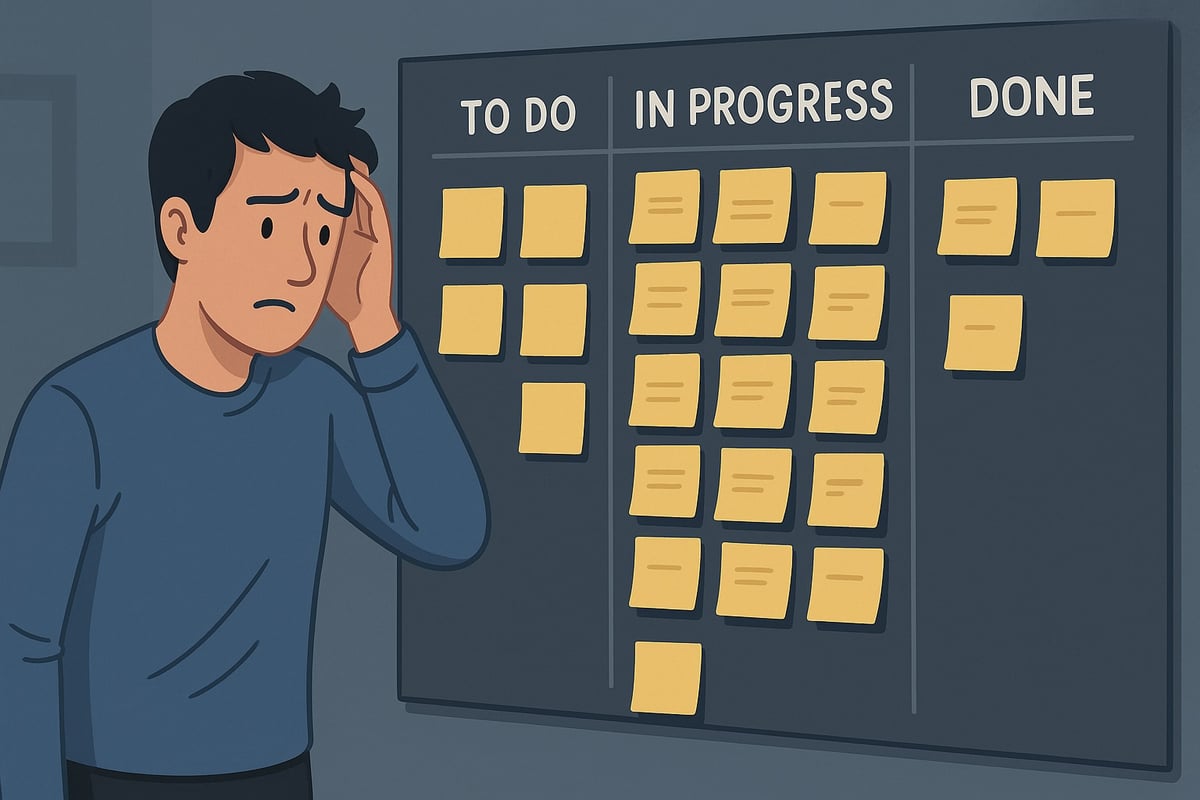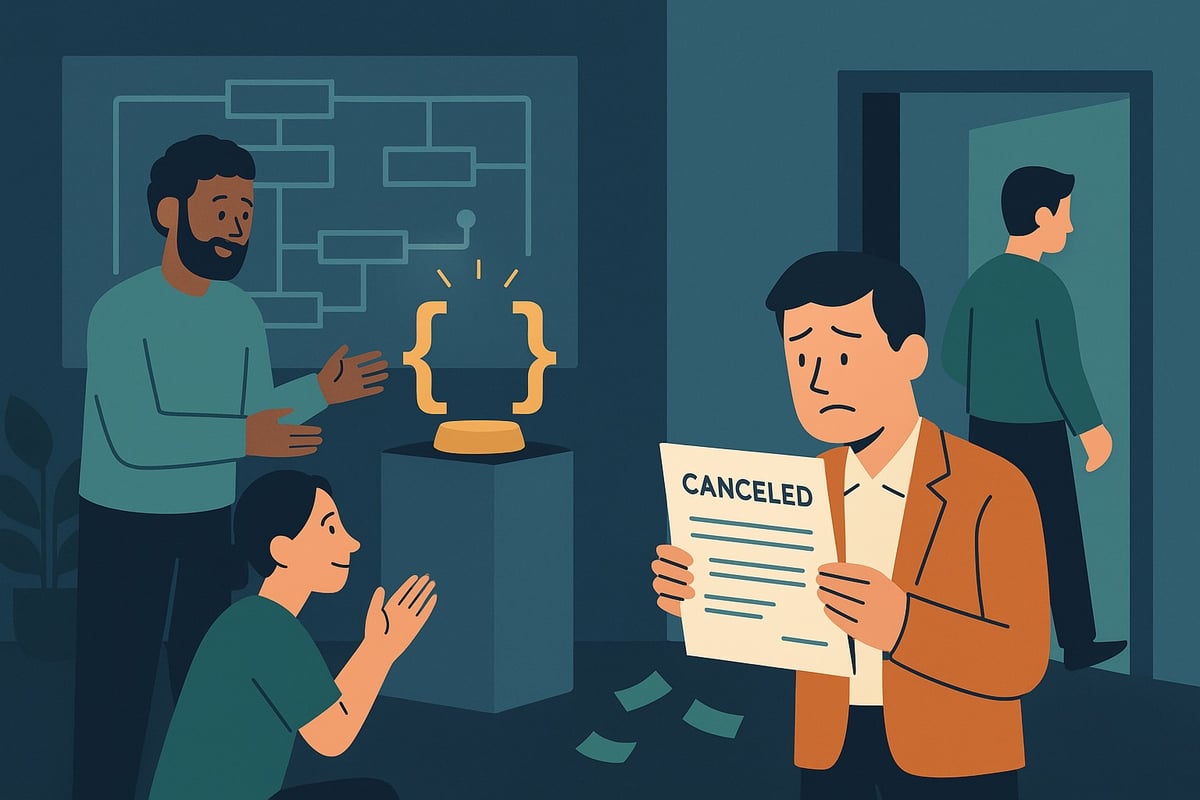Here’s the uncomfortable truth: Your senior engineers are right to resist that new process you’re pushing.
They’ve seen this movie before. The “revolutionary” tool that dies after three sprints. The “game-changing” methodology that adds meetings but not value. The restructuring that shuffles deck chairs while the real problems persist.
70% of organizational changes fail, and your team knows it. They’re not being difficult – they’re being rational. And unlike what you might hear from consultants, the solution isn’t better communication – it’s understanding how to translate complex technical changes into business value that actually matters.
But here’s what separates successful engineering leaders from the frustrated ones: They’ve learned that resistance isn’t the enemy of change. It’s the quality control mechanism that prevents bad ideas from destroying good teams.
Why Engineers Resist (And Why You Should Thank Them)
Every time I see a CTO complain about “change-resistant developers,” I know they’ve missed the point entirely. Your engineers aren’t anti-change. They’re anti-bullshit.
Think about it. These are people who:
- Refactor entire codebases when it makes sense
- Learn new languages and frameworks constantly
- Embrace paradigm shifts like microservices or serverless
The difference? Those changes solve real problems. Most organizational changes solve ego problems.
The three types of resistance you’ll encounter:
1. The Protective Skeptic
Your senior engineer who asks “Why?” fifteen times isn’t being difficult. They’re protecting the team from another productivity-killing distraction and understand the importance of prioritizing initiatives that truly matter. When GitLab went fully remote, their engineers initially resisted. But once leadership proved it would improve work-life balance while maintaining velocity, those same skeptics became the strongest advocates.
2. The Burned Believer
This is the developer who tried hard to make the last three “transformations” work. They wrote the documentation, ran the training sessions, evangelized to their peers. And watched it all get abandoned. Their resistance comes from exhaustion, not stubbornness.
3. The Silent Saboteur
The most dangerous type. They nod in meetings, say the right things, then quietly continue doing things the old way. They’ve learned that passive resistance is safer than vocal opposition. Shopify discovered this pattern when implementing their “meeting cost calculator” – the real adoption happened only after they made the benefits undeniably visible.
The Framework That Actually Works
Forget change management consultants and their 47-step processes. Here’s what actually works in engineering organizations:
Phase 1: Prove It Small (Weeks 1-2)
Start with one volunteer team. Not your most compliant team – your most skeptical one. If you can win over the toughest critics, everyone else follows.
What this looks like:
- Pick a specific, measurable pain point
- Implement your change with just 3-5 people
- Measure results obsessively
- Share data, not opinions
When companies adopt new methodologies, they shouldn’t mandate it company-wide. They should let one team try it for a single cycle. When the reduction in context-switching becomes obvious, other teams start asking to join.
Phase 2: Let Success Spread (Weeks 3-6)
Don’t push. Let other teams pull. When engineers see their peers shipping faster or dealing with fewer fire drills, curiosity beats skepticism every time.
Critical success factors:
- Make early adopters visible heroes, not teacher’s pets
- Document what’s working AND what’s not
- Adjust based on feedback (and tell everyone you’re adjusting)
- Never say “just trust the process”
Phase 3: Systematize Without Bureaucratizing (Weeks 7-12)
This is where most changes die – in the transition from experiment to standard practice. The key is maintaining flexibility while establishing consistency.
Amazon’s two-pizza teams didn’t succeed because of rigid rules. They succeeded because the principle was clear (small, autonomous teams) but implementation was flexible.
Turning Skeptics Into Champions
The fastest way to convert a skeptic? Make them part of the solution.
Your resistant senior engineer probably has a list of everything wrong with your proposal. Good. That list is gold. Here’s how successful teams turn their biggest skeptics into their strongest advocates:
- Asked skeptics to lead the criticism session – “Tell us everything that could go wrong”
- Turned objections into design constraints – Each concern became a requirement to address
- Made skeptics the official “devil’s advocates” – Their job was to find holes
- Celebrated when they found problems – Treating criticism as contribution, not resistance
Result? The final implementation addressed concerns before they became failures. The skeptics became champions because they’d helped build something that actually worked.
The Trust Accelerator Most Leaders Miss
Want to know the fastest way to build trust during change? Admit what you don’t know.
Nothing builds credibility faster than saying, “We think this will help with X, but we’re not sure about Y. Help us figure it out.”
Contrast this with the typical approach: “This WILL transform everything!” followed by predictable failure and eroded trust.
When companies shift their entire development process, the best leaders don’t pretend to have all the answers. They say, “We need to change how we work. Here’s our hypothesis. Help us test it.” The transparency turned potential resistance into collaborative problem-solving.
Your Implementation Checklist
Ready to implement change that actually sticks? Here’s your playbook:
Week 1:
- Identify your biggest skeptic and invite them to coffee
- Ask: “If you could fix one thing about how we work, what would it be?”
- Find alignment between their pain and your proposed change
Week 2:
- Run a “pre-mortem” with your skeptics – imagine the change failed, why did it happen?
- Pick ONE team for a time-boxed experiment
- Define success metrics that developers actually care about
Week 3-4:
- Share results publicly – good and bad
- Ask skeptics to present the findings
- Let organic interest drive expansion
Week 5-8:
- Expand slowly, adjust constantly
- Celebrate the people finding problems as much as those promoting success
- Document everything – engineers trust data, not speeches
The Bottom Line
Resistance isn’t your enemy. It’s your early warning system.
The question isn’t how to overcome resistance. It’s how to harness it. Your skeptics aren’t obstacles – they’re your quality assurance team for organizational change.
Every successful change I’ve seen in engineering organizations had the same pattern: The biggest skeptics became the strongest champions. Not because they were convinced by PowerPoints or mandates, but because they helped build something that actually made their lives better.
So here’s my challenge to you: What change have you been pushing that your team keeps resisting? What if, instead of pushing harder, you asked your biggest skeptic to help you redesign it?
Their resistance might be the best thing that ever happened to your transformation.








